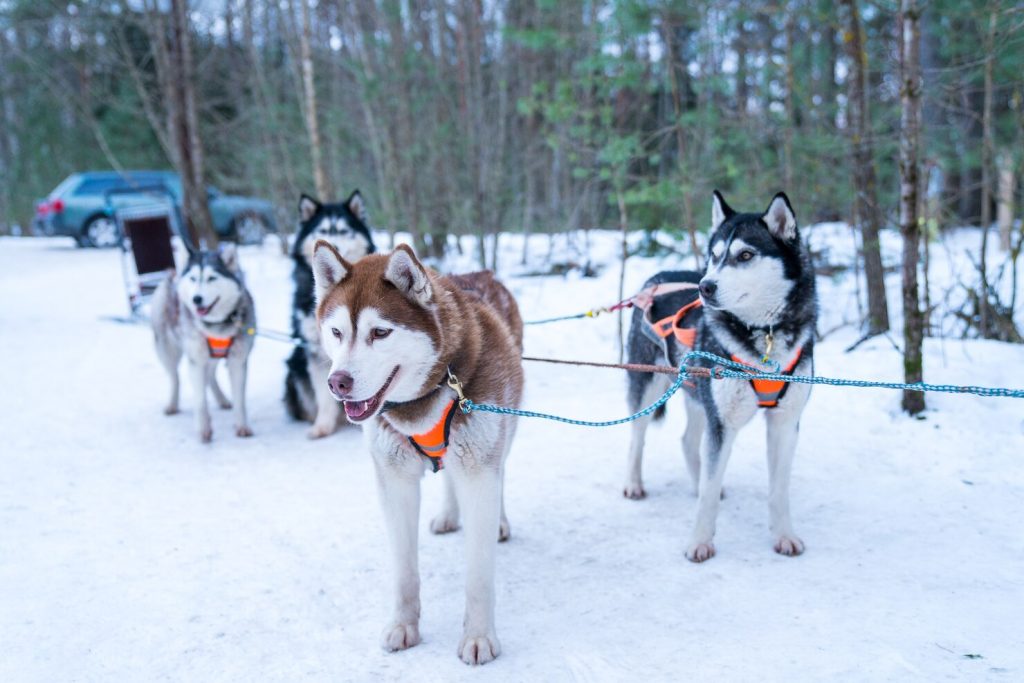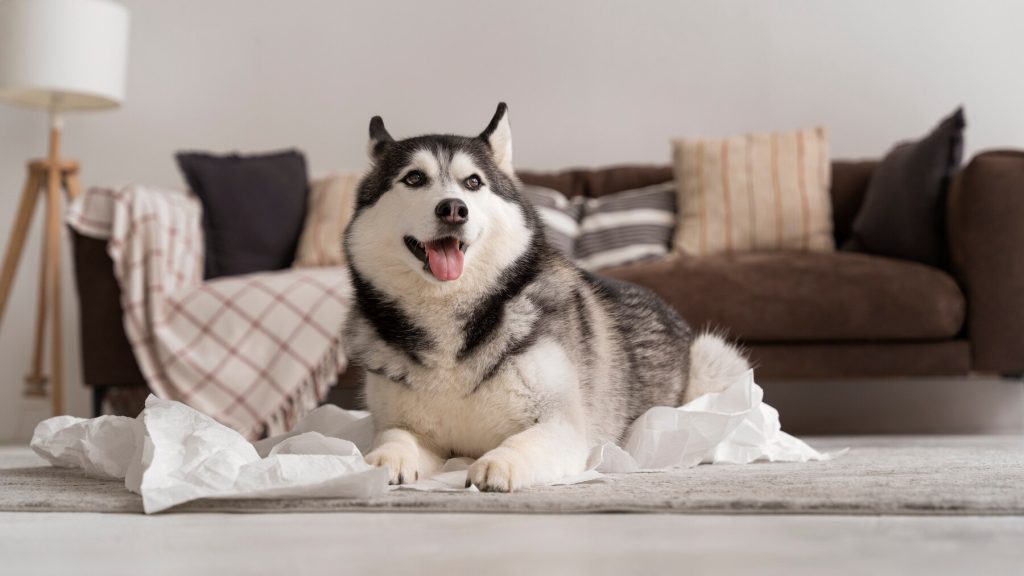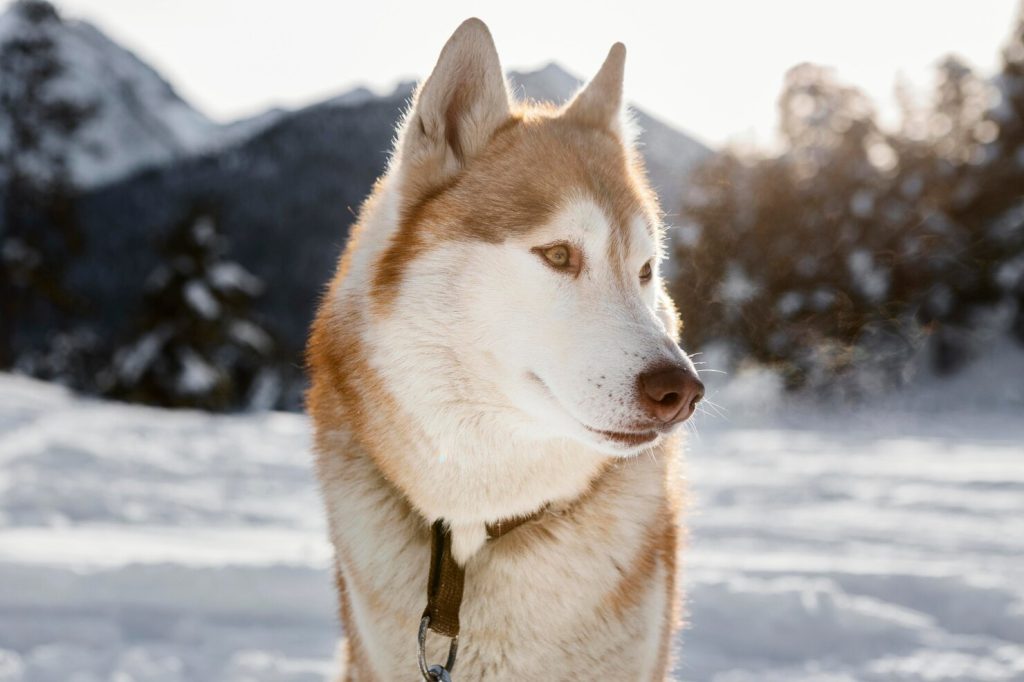Comprehensive Guide to Training a Siberian Husky Puppy
Introduction: Working with a Responsible Breeder
Training a Siberian Husky puppy begins long before you bring your furry friend home. It starts with choosing a responsible breeder. This decision is crucial, as it ensures you get a healthy, well-bred puppy and one whose temperament is a good fit for your lifestyle.

Understanding the Breeder’s Role: A responsible breeder does more than just raise puppies; they are committed to the health and well-being of each dog. They prioritize genetic health testing, provide early socialization, and often begin the basics of training. This foundation is essential for any training you will do with your puppy.
Selecting the Right Puppy: When visiting a breeder, observe how the puppies interact with each other and humans. Look for a puppy that is curious, not overly shy or aggressive. A good breeder will help you choose a puppy that matches your energy level and training experience.
Health Checks and Vaccinations: Ensure that the puppy you select has had the necessary health checks and vaccinations. A responsible breeder will provide you with health records and be transparent about any potential genetic health issues common in the breed.
Breeder Support: A significant advantage of working with a reputable breeder is their ongoing support. They can be valuable for advice on training, nutrition, and health issues specific to Siberian Huskies.
Preparing for Homecoming: Before bringing your puppy home, ask the breeder about their current routine, including feeding schedules, sleeping arrangements, and any training they have started. Matching this routine as closely as possible can help ease your puppy’s transition into their new home.
Remember, the relationship with your breeder is a partnership that benefits you and your puppy. Their insights and support can be invaluable in laying the groundwork for successful training and a happy, healthy life for your Husky.
Essential Training Milestones and Timeline for Siberian Huskies
Key Training Milestones at 8 Weeks
Your Siberian Husky pup is ready to start learning at eight weeks old. This early stage is crucial for setting the foundation for future training. Here are some key milestones to aim for:
- Name Recognition: Begin by teaching your dog their name. Use it often, and reward them with treats and praise when they respond. This builds the foundation for future commands.
- Basic Commands: Start with simple commands like ‘sit,’ ‘stay,’ and ‘come.’ Keep training sessions short, positive, and rewarding. Puppies have short attention spans, so consistency is critical.
- House Training: Introduce house training immediately. Regularly take your dog to a designated bathroom spot and reward them when they use it. Patience and consistency are essential.
- Crate Training: This helps with house training and provides a safe space for your puppy. Introduce the crate positively, using treats and praise to create a comfortable association.
- Socialization: Begin socializing your dog with different people, pets, and environments. This helps them become well-adjusted and reduces fearfulness and aggression as they grow.
- Leash Training: Get your pup used to a collar and leash. Start with short walks inside or in a secure area. This sets the stage for more extended walks and public outings.
- Bite Inhibition: Teach your puppy that biting is not acceptable. If they bite, give a firm ‘no’ and replace your hand or clothing with a chew toy.
- Environmental Familiarity: Expose your puppy to various sounds, sights, and surfaces. This can include household noises, floor textures, and gentle handling of their paws and ears.
Remember, every puppy is unique, so that they may progress at different rates. Be patient, and adjust your training approach as needed. The goal at this stage is to create positive associations with training and establish a routine that your puppy can rely on.
Addressing Common Siberian Husky Behaviors

Bolting out Open Doors
Siberian Huskies are known for their escape artist tendencies. Training them to stay put even when doors are open is crucial. Begin by teaching the “stay” command at the door. Gradually increase the challenge by opening the door wider while rewarding them for staying put. If they attempt to bolt, calmly bring them back and start again. Consistency and patience are key.
Managing Chewing Habits
Chewing is a natural behavior for puppies, especially Huskies. Provide them with appropriate chew toys and redirect them to these toys whenever they chew on something inappropriate. If you catch them chewing on something off-limits, offer a firm “no” and replace it with a chew toy.
Curbing Digging Tendencies
Digging can be a favorite pastime for many Huskies. To manage this, designate a specific area in your yard where it’s okay for them to dig. Encourage them to dig in this area and reward them for doing so. Deter digging in unwanted areas by using barriers or deterrents.
Preventing Fence Climbing
Huskies are notorious for their ability to climb and jump over fences. Ensure your fencing is Husky-proof: tall enough and without footholds. Training your Husky to come when called and to stay within boundaries is also crucial.
Reducing Jumping Up
Train your Husky not to jump up on people by ignoring them when they jump and rewarding them when they have all four paws on the ground. Consistency from all family members and visitors is crucial in teaching this behavior.
Correcting Mouthing Behavior
Puppies explore with their mouths, but teaching them not to mouth on humans is essential. If your Husky mouths you, give a firm “no” and replace your hand with a chew toy. If they continue, end the interaction briefly to reinforce that mouthing leads to negative consequences.
Specific Training Techniques for Siberian Huskies
Effective Crating Strategies
Crating can be a beneficial tool for training and providing a safe space for your Husky. Here’s how to make the most of it:
- Choose the Right One: Select a large crate for your Husky to stand, turn around, and lie down comfortably. Ensure it’s sturdy and secure.
- Create Positive Associations: Positively introduce the crate. Place treats, toys, and comfortable bedding inside. Never use the crate as a punishment.
- Gradual Introduction: Let your Husky explore the crate with the door open. Encourage them to enter by placing treats inside. Gradually increase the time they spend in the crate with the door closed.
- Feed Meals: Feeding your Husky in their crate can help create a positive association. Start by placing their food bowl near the crate and gradually move it inside.
- Training While at Home: Begin crate training while you’re still home. This helps prevent associating the crate with being left alone and reduces anxiety.
- Nighttime: Place the crate in your bedroom if you plan to create your Husky at night. Gradually move it to the desired location over several nights or weeks.
- Consistent Schedule: Maintain a regular schedule for crating. This helps your Husky understand when to expect crate time.
- Games and Toys: Use toys and puzzle feeders to keep your Husky entertained while in the crate. This helps prevent boredom and anxiety.
- Monitoring Time: Ensure your Husky isn’t crated for too long. Pups especially need regular breaks for bathroom and exercise.
Safe Introduction to Children and Other Pets

Introducing your Husky to children and other pets requires patience and supervision:
- Controlled Environments: Start introductions in a controlled, neutral environment. Ensure all interactions are closely supervised.
- Teach Gentle Interaction: Teach children how to interact gently with your Husky: no pulling, poking, or rough play.
- Slow and Gradual: Allow your Husky to approach children and other pets at their own pace. Never force interaction.
- Positive Reinforcement: Reward calm and gentle behavior with treats and praise.
- Safe Spaces: Ensure your Husky has a safe space to retreat if they feel overwhelmed.
- Monitor Body Language: Pay attention to signs of stress or discomfort in your Husky and intervene if necessary.
Expert Advice and Q&A on Siberian Husky Training
Professional Insights on Training Challenges and Solutions
Training a Husky can come with unique challenges. Here’s expert advice on common issues and their solutions:
- High Energy Levels: Huskies are incredibly energetic. Daily exercise is crucial to keep them physically and mentally stimulated. Without it, they may develop destructive behaviors.
- Stubbornness: Huskies are known for their independent nature. Use positive reinforcement techniques, like treats and praise, to motivate them. Be patient and consistent.
- Escape Artist Tendencies: Huskies often try to escape confined spaces due to their high intelligence and curiosity. Ensure your yard is secure and provide mental stimulation to keep them engaged.
- Prey Drive: Huskies have a strong prey drive. Training them to respond to recall commands is essential, especially in off-leash scenarios.
- Social Needs: Huskies are social animals. Regular socialization with other dogs and people is essential for their emotional well-being.
- Boredom and Destructive Behaviors: Keep your Husky entertained with interactive toys and regular playtime. Boredom can lead to destructive behaviors like chewing and digging.
- Separation Anxiety: This breed can be prone to separation anxiety. Gradual desensitization to being alone, along with crate training, can help reduce anxiety.
- Vocalization: Huskies are a vocal breed. Teaching them commands to speak and be quiet can help them manage excessive barking and howling.
Essential Tools and Resources for Training

List of Necessary Equipment and Helpful Resources
Having the right tools and resources can significantly ease the training process with your Husky. Here’s a compiled list of essentials:
- Adjustable Collar and Leash: A sturdy, comfortable collar and a durable leash are fundamental for safe walks and training sessions.
- Training Treats: High-value treats are great for positive reinforcement during training. Choose treats that are small, tasty, and healthy.
- Crate: A well-sized crate is essential for crate training and providing a safe space for your Husky.
- Chew Toys: Durable chew toys are necessary to satisfy your Husky’s chewing instincts and to prevent them from chewing on inappropriate items.
- Interactive Toys: Puzzle toys and games can help keep your Husky mentally stimulated and prevent boredom.
- Exercise Pen: An exercise pen or baby gates can help manage your Husky’s movement and keep them safe in a controlled area.
- Clicker: A training clicker can help mark desired behaviors during training sessions.
- Training Books and Videos: Invest in good training books and videos tailored explicitly for Huskies or similar breeds.
- Professional Trainer Contacts: Having contacts for professional trainers, especially those experienced with Huskies, can be invaluable.
- Online Forums and Communities: Joining online forums and communities for Siberian Husky owners can provide support, advice, and shared experiences.
- Grooming Supplies: Regular grooming is essential for Huskies. Brushes, nail clippers, and shampoo suitable for their coat and skin are necessary.
- Identification Tags and Microchip: Ensure your Husky has an identification tag and is microchipped in case they get lost, especially given their tendency to wander.
Having these tools and resources at your disposal will help you provide a structured and effective training environment for your Siberian Husky.
Additional Training Tips and Tricks

When training your Siberian Husky, it’s vital to employ strategies that cater to their unique temperament and needs. Here are some streamlined tips for practical training:
- Begin Training Early: Start when your Husky joins your family, focusing on consistency in commands and routines.
- Fun, Short Sessions: Keep training enjoyable and brief to hold your Husky’s attention.
- Positive Reinforcement: Reward good behavior with treats, praise, and play to encourage learning.
- Adequate Exercise: Regular physical and mental exercise is crucial to keep your Husky focused and well-behaved.
- Socialization: Expose your Husky to various environments and experiences to foster a well-rounded temperament.
- Adapt to Their Personality: Tailor your training approach to suit your individual Husky’s personality and learning style.
- Patience is Key: Be patient and understanding, recognizing that training progress may vary.
- Diverse Training Environments: Practice commands in different settings to reinforce learning.
- Strengthen Your Bond: Use training time to deepen your connection with your Husky.
- Professional Assistance: Don’t hesitate to consult a professional trainer for challenging behaviors.
Expert Tips for Effective Training Sessions
Start early and maintain consistent routines for practical training of your Siberian Husky. Keep training sessions short and engaging, utilizing positive reinforcement like treats and praise. Regular exercise keeps them focused, and socialization is critical to well-rounded development. Understand and adapt to your Husky’s unique personality, and be patient, as training progress can vary. If challenges arise, don’t hesitate to seek professional advice. Above all, use training as an opportunity to strengthen your bond with your Husky, ensuring a rewarding and enjoyable experience for both of you.
Conclusion
In conclusion, training a Husky pup requires patience, consistency, and understanding of their unique character traits. You can effectively guide your Husky through their developmental stages by employing positive reinforcement, early socialization, and tailored training strategies. Remember, the journey of training your Husky is about obedience and building a deep, lasting bond. With dedication and the right approach, you and your Husky will enjoy a harmonious and fulfilling companionship.
